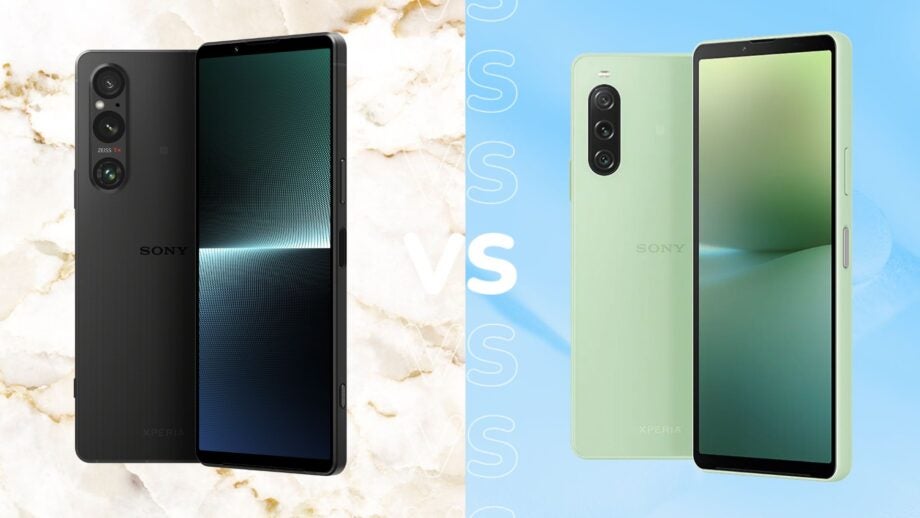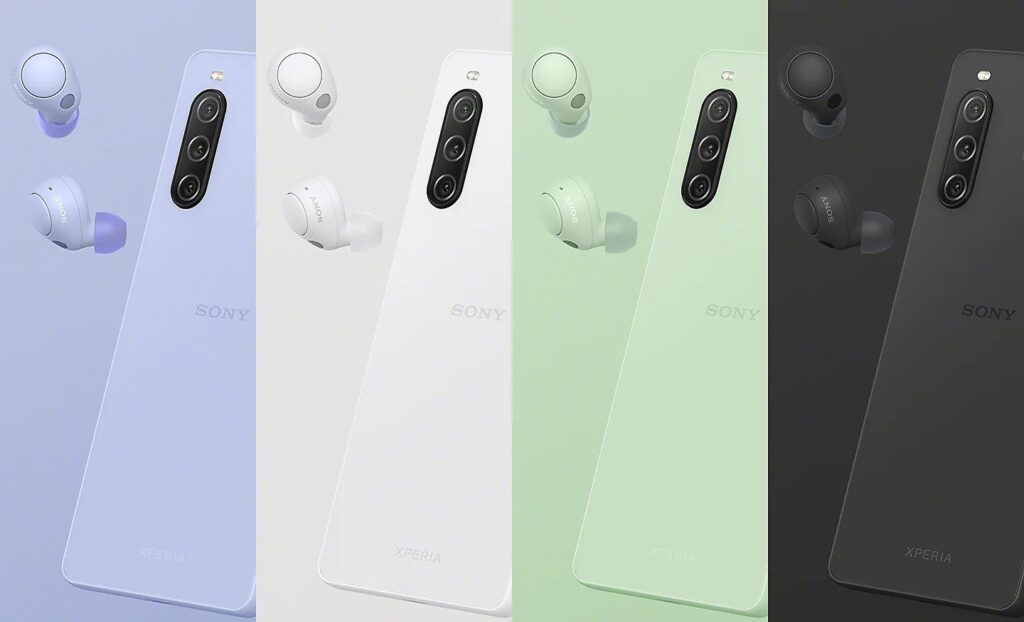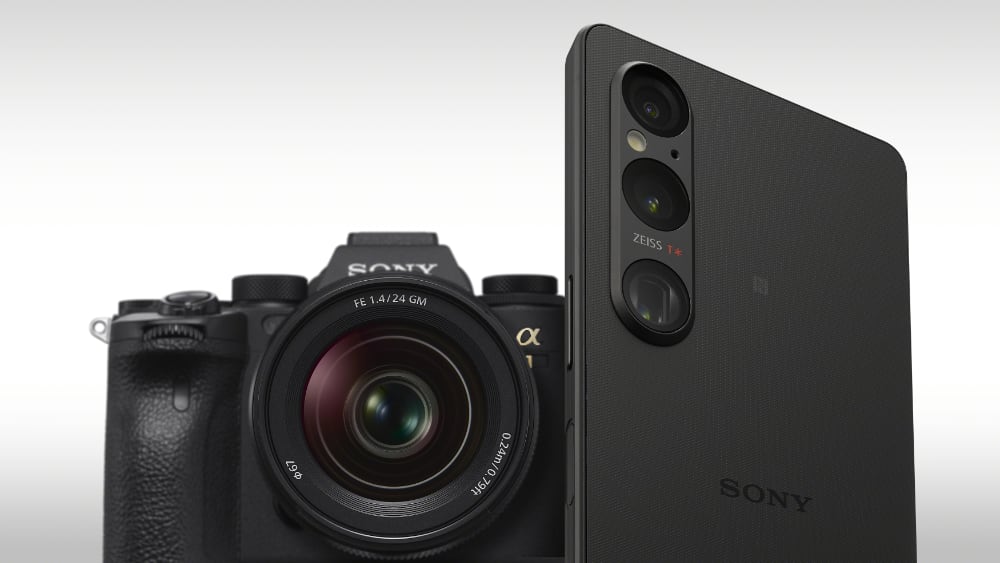Sony Xperia 1 V vs Sony Xperia 10 V: What’s the difference?

The Sony Xperia 1 V and Xperia 10 V are the latest smartphones in Sony’s 2023 collection, but what’s the difference between the two?
While the Sony Xperia 10 V is an entry-level smartphone with a £399 price tag, the Sony Xperia 1 V is the company’s 2023 flagship and, as such, has thrown the kitchen sink at it with key specs including a 4K display, a new Exmor T camera sensor and top-end performance from the Snapdragon 8 Gen 2.
The question is, does the Xperia 10 V do enough to tempt users from the Xperia 1 V? Well…
The Xperia 1 V has a better display
The Sony Xperia 1 V offers a flagship display experience typical of Sony’s top-end flagships, with key specs including a smooth 120Hz refresh rate, HDR support, Gorilla Glass Victus 2 protection and a near-4K (1644 x 38400) resolution – the latter remains a unique offering among Sony’s smartphones in the larger Android market.
4K resolution may be overkill in most scenarios on a smartphone, but it allows you to truly appreciate every single pixel when watching native 4K content from the likes of Netflix and YouTube. It’s also a large panel at 6.5 inches, and OLED display tech means blacks should be inky and colours extremely vibrant.
On the other hand, the Sony Xperia 10 V measures slightly smaller at 6.1 inches, though it still boasts OLED tech – an impressive feat at its lower-mid-range price tag. But while it also boasts HDR support, the display caps out at a Full HD+ (1080 x 2520) resolution and 60Hz.
The 60Hz refresh rate is a particular weakness not only compared to Sony’s Xperia 1 V but most of the similarly priced competition, with even budget options like the £279 Xiaomi Redmi Note 12 5G offering an AMOLED panel and 120Hz refresh rate for smoother animations.

The Xperia 10 V is much lighter
The Sony Xperia 10 V may not be able to compete in terms of sheer spec compared to the flagship Xperia 1 V, but there is one area that it comes out on top; design. More specifically, weight.
The Xperia 10 V weighs in at a relatively svelte 159g, making it one of the lighter smartphones around, not just compared to Sony’s flagship. Though at the same 8.3mm width, it’s not quite as thin as you’d expect from a lightweight smartphone.
For comparison, the 8.3mm-thick Sony Xperia 1 V weighs 187g – still not a heavyweight compared to the likes of the 240g iPhone 14 Pro Max, but still weightier than its cheaper sibling likely due in part to the larger 6.5-inch display.
The Xperia 1 V has better camera capabilities
The Sony Xperia 1 V is easily the more capable of the two smartphones with an exciting primary sensor. It’s a new 52MP Exmor T sensor with a unique two-layer transistor within the CMOS that Sony claims helps deliver better performance in low light, touting a 2x improvement compared to the Xperia 1 IV.
It’s also helped by the fact that the sensor is 1.7x larger than that of its predecessor. In fact, Sony claims that combined with its advanced computational photography tech, photos can match the quality of traditional DLSRs – though that’s something we’ll have to verify once we go hands-on with the flagship.
That’s flanked by a 12MP ultrawide and a 12MP telephoto lens with 5.2x optical zoom.

While the Xperia 10 V can’t quite compete with its more premium sibling, its camera offering is not to be sniffed at – especially compared to the wider competition at the mid-range price. The main star of the show is a 48MP sensor with an f/1.8 aperture, PDAF focus tech and OIS for smooth video capture.
That’s flanked with a less-impressive 8MP 2x telephoto and 8MP 120-degree ultrawide to improve the versatility of the affordable smartphone further.

55% off the Samsung Galaxy Note 10 Plus
Save £600 on the Samsung Galaxy Note 10 Plus with this deal, which sees 55% having been slashed off the price of this smartphone’s original RRP, from when it launched back in 2019.
- Amazon
- Was £1,099
- Now £499
The Xperia 1 V’s Snapdragon 8 Gen 2 is powerful
The Xperia 1 V is Sony’s 2023 flagship and, as such, it should come as no surprise that it’s a powerhouse of processing power with Qualcomm’s top-end Snapdragon 8 Gen 2 chipset at its heart, coupled with an ample 12GB of RAM and either 256GB or 512GB of storage.
While we’ve not benchmarked the Xperia 1 V just yet, we have used plenty of 2023 flagships with the Snapdragon 8 Gen 2 so we have a good idea of just how well the phone will perform.
Also, Sony has done a lot of work with overheating – an issue that plagued the Xperia 1 IV – with a 60% larger heat diffusion sheet that should keep it much cooler over long periods of use.
The Xperia 10 V, on the other hand, sports the distinctly mid-range Snapdragon 695 chipset – an SoC that was announced back in 2021 – with half the RAM of the Xperia 1 V at 6GB.
Like the Xperia 1 V, we’ve not gone hands-on with the Xperia 10 V just yet, but with experience using Snapdragon 695-equipped phones like the OnePlus Nord CE 3 Lite, we expect performance to be fine overall, though it may not be able to power some AAA titles with high-level textures enabled.
The Xperia 1 V is triple the cost of the Xperia 10 V
This comparison might seem one-sided with the Xperia 1 V seemingly beating the 10 V in most key areas, but there’s a good reason for that: the Xperia 1 V costs over triple the amount of the Xperia 10 V – in the UK, at least.
The Sony Xperia 10 V comes in at a rather pocket-friendly £399 in the UK, while the Sony Xperia 1 V comes in at an eye-watering £1,299 – more than the Samsung Galaxy S23 Ultra and iPhone 14 Pro Max. So yes, while the Xperia 1 V is certainly more capable than the 10 V, you’ll be paying quite a high premium for it.






